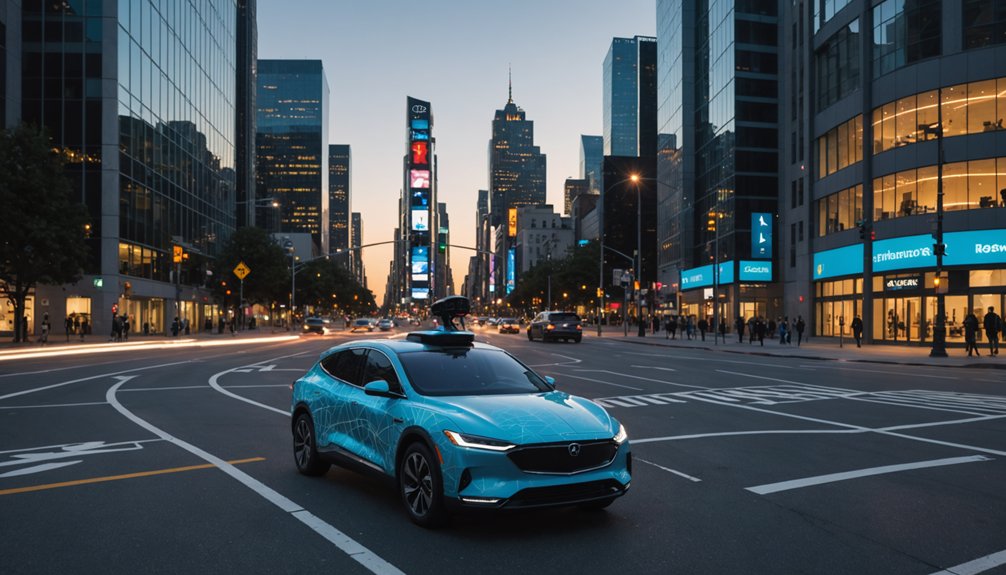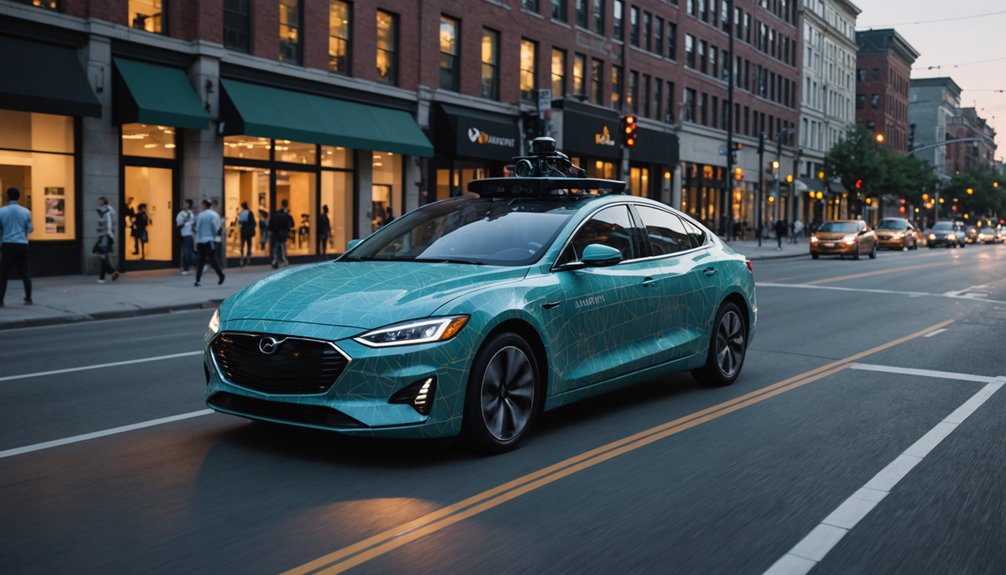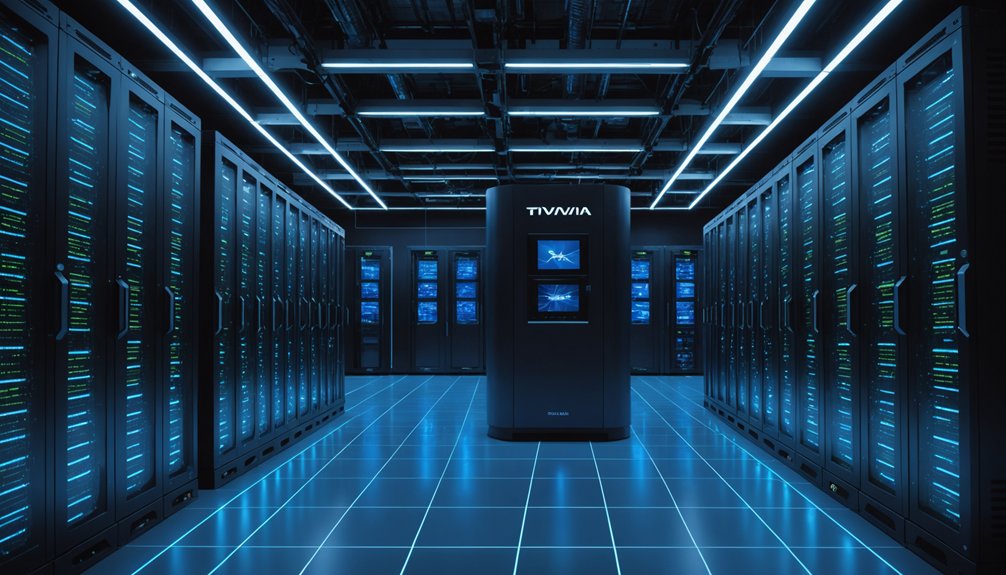AI transforms how vehicles navigate the world. It processes data from cameras and sensors in real-time, making split-second decisions about braking or accelerating. No human error here—just algorithms trained on millions of driving scenarios. These systems predict traffic patterns, optimize routes, and react faster than any human could. They’re slashing accident rates and cutting emissions too. The future of transportation isn’t just autonomous—it’s intelligent.

While humans continue to crash their vehicles with alarming regularity, artificial intelligence is revolutionizing how cars navigate our roads. These smart machines don’t text while driving or doze off after a long day. They’re constantly alert, processing data from cameras, radar, and LiDAR sensors in real-time. No coffee needed.
The magic happens in sensor fusion. AI combines all this information to create a thorough picture of the world around the vehicle. It’s like having a hundred eyes, all working together. The system processes this data instantly—no human could match this speed. Ever. Similar to AI threat detection, the system analyzes massive datasets to identify patterns and anomalies in real-time.
Navigation is where AI really flexes its muscles. These systems plan best routes, constantly updating based on traffic conditions. Much like diagnostic precision in healthcare, AI’s analytical capabilities ensure highly accurate navigation decisions. Stuck in gridlock? The AI already knows three alternate routes. It’s analyzing traffic patterns while you’d be cursing at the car ahead. This dynamic adaptation means less time sitting in traffic and more efficient travel overall.
Decision-making is instant and calculated. Should the car brake or accelerate? AI makes these choices in milliseconds, using machine learning models trained on millions of driving scenarios. It predicts what other drivers might do before they do it. That car edging into your lane? The AI saw it coming. Advanced algorithms constantly perform risk assessment to determine the safest course of action in any given situation.
Safety improvements are dramatic. Human error causes most accidents—AI eliminates this factor. Collision avoidance systems, enhanced braking, and vehicle stability control all work together to prevent crashes. The computer doesn’t get distracted by a text message or an attractive pedestrian. AI aims to reduce the 93% of accidents caused by human errors through constant vigilance and faster reaction times.
The environmental benefits are substantial too. AI optimizes routes for fuel efficiency and reduces congestion through smarter navigation. Less traffic means fewer emissions. Plus, autonomous vehicles offer increased mobility for elderly and disabled individuals who can’t drive conventional cars.
The road ahead is clear. AI-powered vehicles aren’t just a tech novelty—they’re a transformation in transportation that will make our roads safer, cleaner, and more accessible. Humans, take note.
Frequently Asked Questions
How Do Autonomous Vehicles Handle Extreme Weather Conditions?
Autonomous vehicles tackle extreme weather through multiple sensor types—cameras, radar, lidar.
They’re not perfect. Rain, snow, and fog still mess with visibility.
Vehicles use redundancy—if one system fails, others take over. Infrared helps see through nasty conditions.
AI constantly learns and adapts to weather challenges. Real-time weather data gets integrated for smarter routing.
Still, performance drops in severe conditions—that’s just reality. Testing happens everywhere, even the worst environments.
What Ethical Frameworks Guide AV Decision-Making in Unavoidable Accidents?
When AVs face unavoidable crashes, they rely on pre-programmed ethical frameworks.
Deontological approaches stick to rigid principles—everyone’s treated equally. Utilitarianism? It’s all about the numbers—save the most lives.
Some companies blend frameworks, using Ethical Valence Theory to incorporate social acceptability. Tough calls.
The trolley problem isn’t just theoretical anymore. Engineers must decide: protect passengers or pedestrians?
Social norms help, but algorithms make these choices in milliseconds.
How Do AVS Interact With Emergency Vehicles and Traffic Police?
AVs interact with emergency vehicles through specialized technology like LYT, enabling real-time communication.
They’re programmed to yield immediately—no human hesitation here. Recognition systems identify flashing lights and sirens, triggering priority adjustments.
Traffic police? AVs follow conditional routing instructions when directed.
The tech’s still evolving, though. Collaborative designs increasingly incorporate first responder feedback to guarantee AVs don’t become obstacles during crises.
Safety protocols tell responders when an AV is safe to approach.
What Are the Cybersecurity Vulnerabilities of Autonomous Vehicles?
Autonomous vehicles face serious cybersecurity threats. Their complex systems and interconnectivity create multiple attack vectors.
Hackers can tamper with sensors, modify software, or execute large-scale attacks affecting numerous vehicles simultaneously. Tesla’s Autopilot has already been hacked—not reassuring.
Data breaches are another concern. The industry’s playing catch-up with security measures like encrypted communications, regular updates, and AI-based anomaly detection.
Regulatory frameworks? Still evolving, of course.
How Do Autonomous Vehicles Impact Car Insurance Policies?
Autonomous vehicles are reshaping insurance policies. Period.
With machines taking the wheel, liability shifts from drivers to manufacturers and software companies. Premiums might rise due to pricey tech components—those fancy sensors aren’t cheap.
But fewer accidents? That’s the silver lining. Regulations are playing catch-up, creating a patchwork of requirements across states.
Traditional coverage just doesn’t cut it anymore. New risks, new policies. Insurance companies better adapt—or get left behind.




